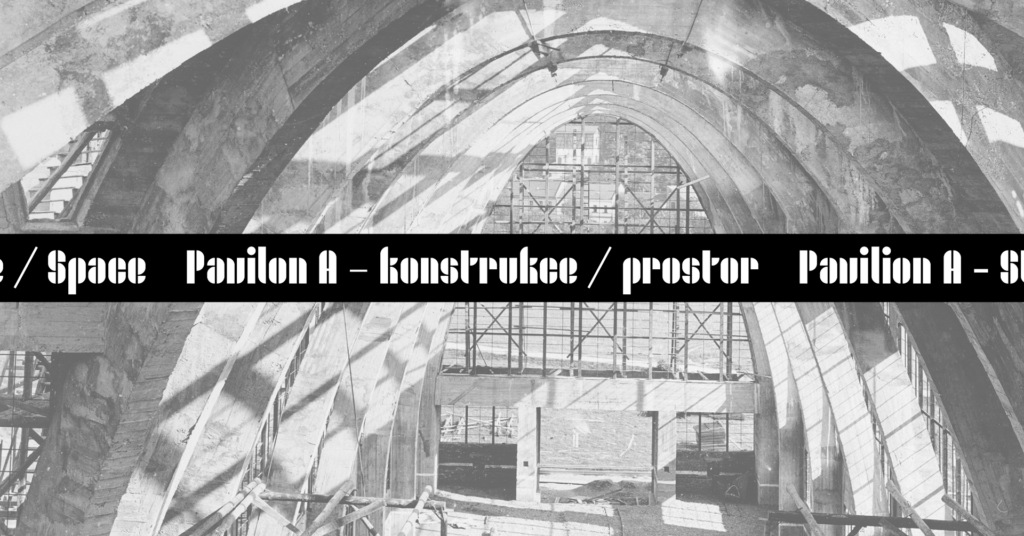
After its completion in 1928, the main exhibition palace of the Brno Exhibition Centre won the admiration of its contemporaries and its progressive structural design and impressive architectural form continue to fascinate today. For the impression of its interiors, Pavilion A has been compared to a cathedral, and this monumental effect has not been diminished by the numerous structural modifications the building has undergone during its existence. The mass of the pavilion, with its central Rotunda and two halls broken by side wings, forms the initial element of the urban composition of the exhibition area and at the same time becomes its visual landmark. The arches of the pavilion have always attracted not only the creators of exhibitions and visitors to the exhibition centre, but also artists, and the characteristic arches of the building have thus appeared in many works of art and photographs. The iconic parabolic curve has also been reflected in a number of motifs used in advertising graphics and promotion.
The fact that Pavilion A continues to serve its original purpose today is not only a testament to the thoughtfulness of the original concept and the skill of its creators, but also the result of the focused efforts and care of successive generations of architects and the attention of architectural historians and theorists. The complete renovation of Hall A, which took place over more than a decade in the late 1970’s and early 1980’s, added new operational functions to the listed building, with the main visible intervention being the addition of the administrative wing. Equally important was the transformation of the Rotunda from an exhibition space into a congress hall and other modifications, which, together with the installation of new technologies, enabled the adaptation of the historic exhibition architecture to the requirements of exhibition and fair operations in the second half of the twentieth century.
The ambition of the exhibition is to not only summarize the historical facts and show the current form of the pavilion, but also to open a debate on its future restoration.
Exhibition opening: Wednesday 27 September 2023, 18:00
Exhibition: 28 September – 31 December 2023 (accessible without reservation Tue–Sun 9:00–17:00)
The exhibition is situated on the technical ground floor of Villa Tugendhat.
Author team: Lenka Štěpánková, Michal Kolář, Barbora Benčíková, Ludmila Bílá Haasová, Iveta Černá
Proofreading: Alena Benešová
Translation: Kateřina Báňová
Graphic design of the exhibition and accompanying printed material: Studio Pixle
Architectural design: Studio Pixle
Implementation of the exhibition: Studio Pixle, Libor Krejčí, Jiří Pikous
Printed by: Helbich Printers, a. s.
Photo authors: Michal Bernátek, Miloš Budík, Michaela Dvořáková, Kryštof Knoflíček, Ivar Otruba, Rudolf Sandalo, Karel Stoklas, Rudolf Štursa
Photo resources: Muzeum města Brna, Veletrhy Brno, Moravská galerie v Brně, Národní památkový ústav, územní odborné pracoviště v Kroměříži, Brněnský architektonický manuál, Prototyp, authors’ archives
Acknowledgment: Dagmar Černoušková, Jana Effenbergerová, Jindřich Chatrný, Olga Havlátová, Neli Hejduk, Veronika Jičínská, Filip Kyrc, Jiří Palupa, Jiří Pikous, Tomáš Popelínský, Ondřej Skácel, Marta Sylvestrová, Pavel Štursa, Roman Zámečník
The exhibition was prepared by the Villa Tugendhat Study and Documentation Centre, Brno City Museum, with financial support from the Ministry of Culture of the Czech Republic.

